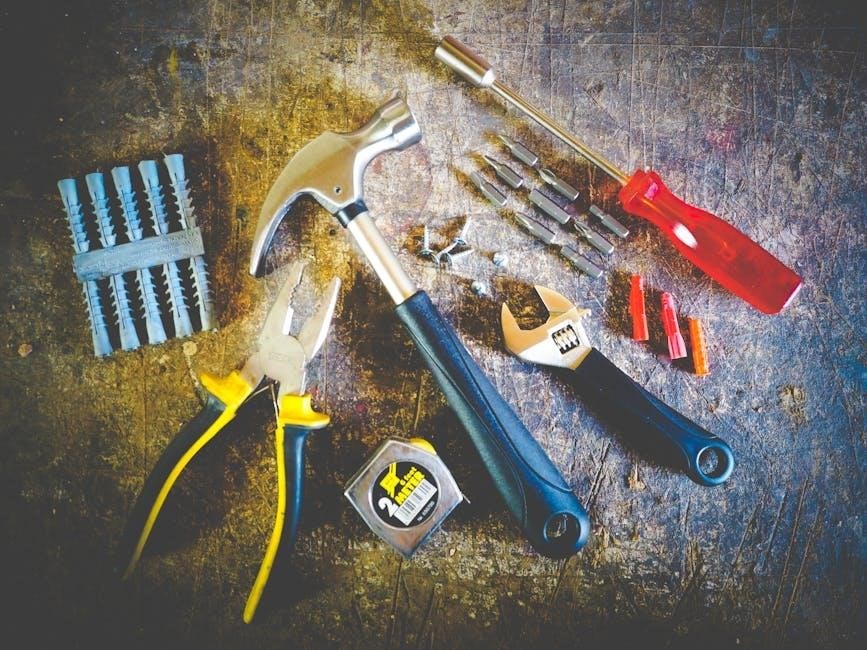Drill bits are versatile tools essential for creating precise holes in various materials. They are a cornerstone in woodworking, metalworking, and construction projects, ensuring accuracy and efficiency.
1.1 What Are Drill Bits?
Drill bits are rotating tools attached to drills, designed to create holes in various materials. Made from materials like high-speed steel (HSS), cobalt, or carbide, they are versatile and essential for woodworking, metal drilling, and masonry. Their unique designs ensure precision and efficiency in both industrial and DIY projects.
1.2 Importance of Drill Bits in Various Projects
Drill bits are indispensable tools in woodworking, metalworking, and construction. Their precision and versatility enable efficient hole creation, crucial for project success. Whether drilling through wood, metal, or masonry, the right drill bit ensures accuracy and durability, making them essential for both professional and DIY tasks.
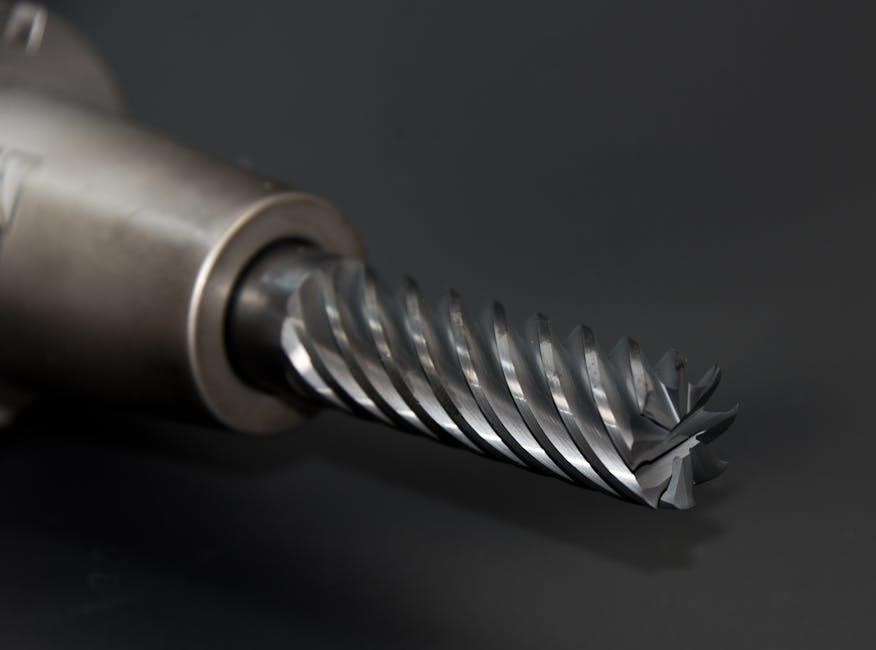
Types of Drill Bits
Drill bits come in various designs, each tailored for specific tasks. Twist, spade, forstner, and masonry bits are common types, ensuring precise hole drilling in wood, metal, and concrete.
2.1 Twist Drill Bits
Twist drill bits are the most common type, featuring a helical flute design. They excel at drilling through metal, wood, and plastic, providing efficient chip removal. Their versatility makes them ideal for general-purpose drilling in various materials, ensuring clean and accurate holes. Available in different materials like HSS and cobalt, they suit various project needs.
2.2 Spade Drill Bits
Spade drill bits are flat, paddle-shaped tools with a central shaft. They are ideal for drilling large, rough holes in wood quickly. Often used in construction, they provide a cost-effective solution for projects requiring big diameter holes, though they lack precision compared to other types like forstner or twist bits.
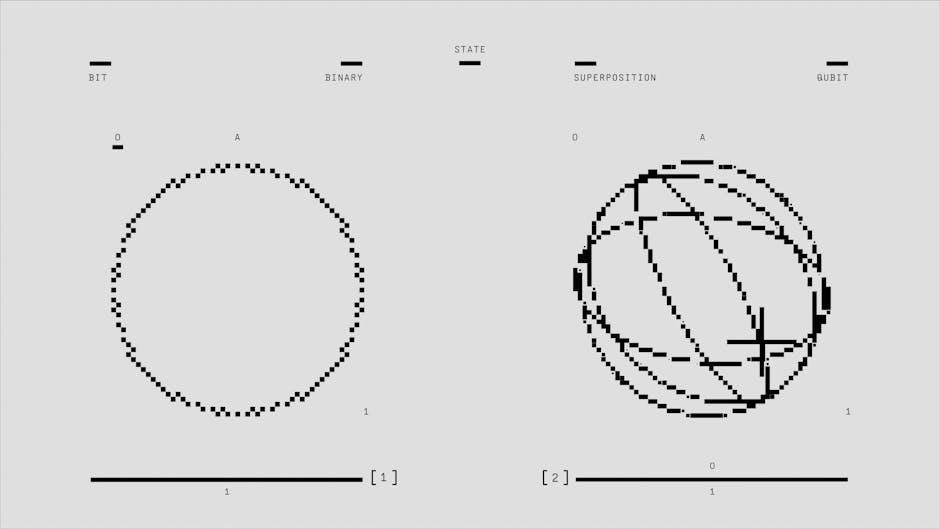
2.3 Forstner Drill Bits
Forstner bits are specialized tools designed for drilling precise, flat-bottomed holes in wood. They excel at creating clean, smooth surfaces without splintering, making them ideal for applications like furniture making and cabinetry. These bits use a continuous rim and spur to achieve accurate results, ensuring minimal material waste and high-quality finishes.
2.4 Countersink Drill Bits
Countersink drill bits are designed to create conical holes in materials like wood and plastic. They typically feature a central twist drill bit surrounded by a conical section, allowing for precise countersinking. These bits are essential for flush-mounting screws, ensuring a smooth surface finish and preventing splintering in delicate materials.
2.5 Masonry Drill Bits
Masonry drill bits are designed for drilling into hard materials like concrete, brick, and stone. They feature a tungsten carbide tip for durability and a flute design that efficiently removes dust. These bits are often used with hammer drills to ensure effective penetration and minimize wear, making them ideal for construction and masonry projects.
Drill Bit Materials
Drill bits are made from various materials, each offering unique durability and performance. Common materials include High-Speed Steel (HSS), Cobalt Steel, Carbide-Tipped, and Titanium-Coated, ensuring optimal results across different drilling applications.
3.1 High-Speed Steel (HSS)
High-Speed Steel (HSS) drill bits are cost-effective and versatile, ideal for drilling into wood, plastic, and soft metals. They resist heat and wear, making them suitable for general-purpose drilling. HSS bits are widely used in DIY projects and professional settings due to their balance of affordability and performance.
3.2 Cobalt Steel
Cobalt steel drill bits are durable and excel in drilling hard metals like stainless steel and titanium. They retain sharpness at high temperatures, making them ideal for demanding industrial applications. Cobalt bits are more expensive than HSS but offer superior performance and longevity in tough drilling tasks.
3.3 Carbide-Tipped
Carbide-tipped drill bits combine tungsten carbide edges with a steel shank for unmatched hardness and wear resistance. They excel in drilling abrasive materials like concrete, masonry, and hardwood. These bits are more expensive but offer exceptional durability and long lifespan, making them ideal for heavy-duty projects and professional use.
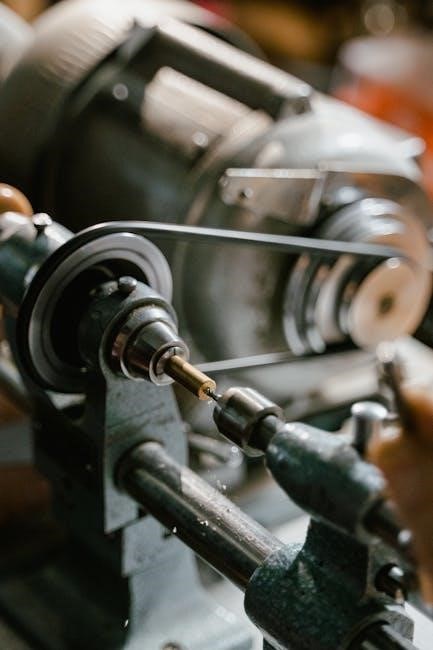
3.4 Titanium-Coated
Titanium-coated drill bits are high-speed steel tools with a titanium nitride coating, enhancing durability and reducing friction. They resist heat and wear, making them ideal for drilling through hard metals like stainless steel and aluminum. The coating extends tool life and improves cutting efficiency, offering a cost-effective solution for metalworking tasks.
Drill Bit Sizes
Drill bit sizes are crucial for precise hole creation. They vary in diameter and length, ensuring compatibility with specific materials and projects, optimizing performance and tool longevity.
4.1 Understanding Drill Bit Diameters
Drill bit diameters are measured in inches or millimeters, determining the size of holes they create. Correct diameter selection ensures precise, clean cuts, preventing material damage or inaccurate results. Standard sizes range widely, catering to various materials and projects. Always match the bit diameter to your task for optimal performance and durability.
4.2 How to Choose the Right Size
Selecting the correct drill bit size involves measuring the desired hole and matching it to the bit’s diameter. Use a size chart or calipers for accuracy. Consider material thickness and project requirements to ensure the right fit, preventing errors or damage. Proper sizing enhances efficiency and quality in all drilling tasks.
Applications of Drill Bits
Drill bits are versatile tools used across various industries for drilling into metal, wood, plastic, and masonry. They are essential for precise hole creation in DIY projects and professional tasks.
5.1 Drilling Through Metal
Drilling through metal requires specific drill bits, such as high-speed steel (HSS) or cobalt-tipped, for durability and precision. These bits efficiently cut through various metal types, ensuring smooth, accurate holes without damaging the material or the tool. Proper technique and consistent pressure are crucial for optimal results.
5.2 Drilling Through Wood
Drilling through wood typically uses twist drill bits for general-purpose holes or spade bits for larger diameters. Forstner bits are ideal for flat-bottom holes. Maintaining steady pressure and using pilot holes helps prevent splitting, ensuring clean, precise results in various woodworking projects.
5.3 Drilling Through Plastic
Drilling through plastic requires using sharp, high-speed steel or carbide-tipped bits to prevent melting. Titanium-coated bits offer durability. Maintain lower drill speeds to avoid overheating. Using a pilot hole helps guide the bit and prevents cracking. This ensures smooth, precise results for plastic materials in various projects.
5.4 Drilling Through Masonry and Concrete
Drilling through masonry and concrete requires robust masonry drill bits. Maintain steady, controlled drill speeds to avoid bit damage. Apply water to reduce friction and overheating. Keep the bit sharp for efficient drilling. Regularly clean debris to ensure precise, durable results in tough materials like brick, stone, or concrete surfaces.
Tips for Using Drill Bits Effectively
To use drill bits effectively, maintain proper speed, use pilot holes, and keep bits sharp. Apply water on masonry to prevent overheating and ensure precise results.
6.1 Maintaining the Correct Drill Speed
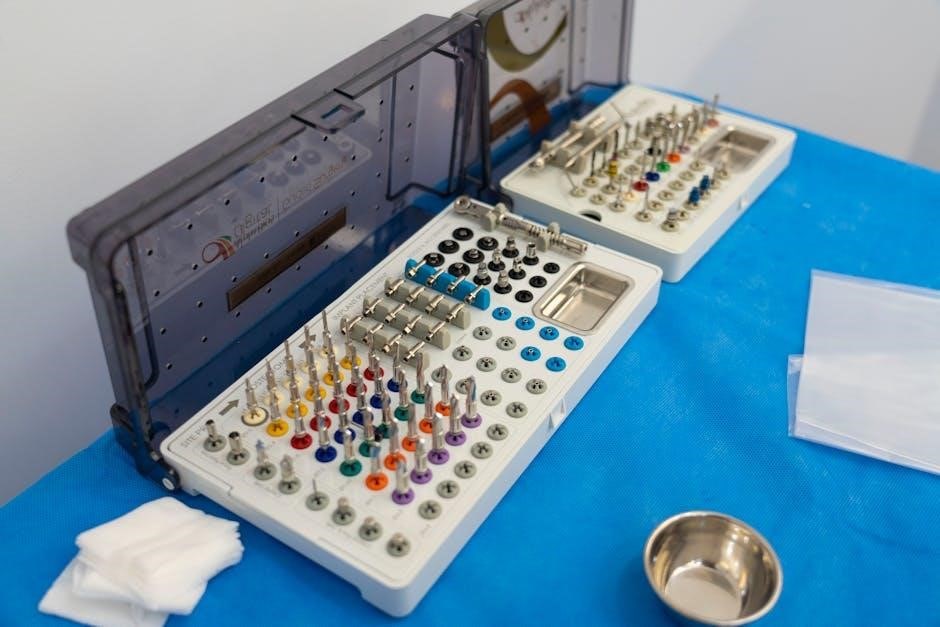
Maintaining the correct drill speed is crucial for efficient drilling. Excessive speed can overheat the bit, while too slow may reduce accuracy. Adjusting speed based on material type ensures optimal performance and prevents damage to the drill bit or workpiece.
6.2 Using Pilot Holes
Using pilot holes ensures accurate drilling and prevents material splitting. They guide the drill bit, maintaining alignment and reducing errors. Pilot holes are especially useful in woodworking and thin materials, helping to achieve precise, professional results with minimal effort and avoiding costly mistakes.
6.3 Keeping Drill Bits Sharp
Keeping drill bits sharp is crucial for efficient drilling and preventing overheating. Dull bits require more force, increasing friction and heat. Regularly sharpen bits using appropriate tools or services, and store them properly to maintain edge quality and extend lifespan, ensuring cleaner cuts and better performance across various materials.
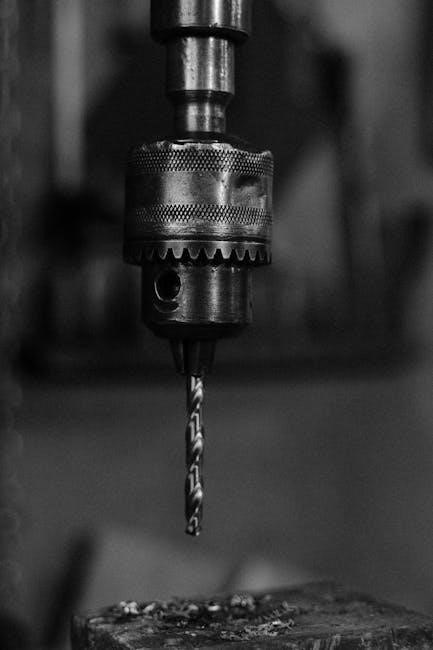
Safety Precautions
Safety precautions are crucial when working with drill bits. Always use the right bit for the material to prevent overheating and damage. Keep work areas clean and well-lit to reduce accidents and ensure proper tool maintenance.
7.1 Proper Handling of Drill Bits
Proper handling of drill bits ensures safety and longevity. Always grip bits firmly, avoid applying excessive pressure, and store them in protective cases. Regularly inspect for damage or wear to prevent breakage during use. Keep loose clothing and long hair tied back while operating drills to avoid accidents.
7.2 Safety Gear for Drilling
Safety gear is crucial for protecting against drilling hazards. Always wear safety glasses or goggles to shield eyes from debris. Dust masks prevent inhalation of particles, while gloves provide grip and protect hands. Hearing protection is also recommended in noisy environments to prevent long-term damage.
Choosing the Right Drill Bit for DIY Tasks
Selecting the right drill bit for DIY tasks involves matching the bit type to the material being drilled, ensuring precise results. Consider size, material, and coating for optimal performance.
8.1 Essential Drill Bits for Home Use
For home use, essential drill bits include twist bits for general drilling, spade bits for large holes, and countersink bits for smooth finishes. These versatile options cover most DIY projects, ensuring efficiency and accuracy across various materials like wood, metal, and plastic.
8.2 How to Select Drill Bits for Specific Projects
Choosing the right drill bit for your project ensures precision and efficiency. Consider the material, hole size, and desired finish. Match the drill bit type to the task, such as twist bits for metal or spade bits for wood. Always check compatibility with your drill and use pilot holes for accuracy. A starter set covers most DIY needs.
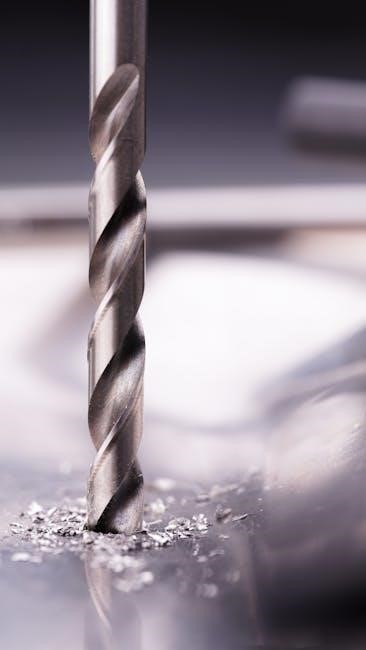
Budget Considerations
Budget considerations involve balancing cost and quality. High-cost drill bits offer durability and efficiency, while budget-friendly options provide basic functionality. Choose based on project demands and frequency of use.
9.1 Balancing Cost and Quality
Balancing cost and quality is crucial for optimal results. High-quality drill bits, like cobalt or carbide-tipped, offer superior durability and performance, especially for tough materials. While they may be more expensive, they reduce wear and tear, making them a cost-effective choice for frequent use and demanding projects.
9.2 When to Invest in High-Quality Drill Bits
Invest in high-quality drill bits for demanding projects requiring precision and durability. When working with hard materials like metal or masonry, premium bits ensure longer lifespan and better performance. They minimize breakage and reduce the need for frequent replacements, making them a worthwhile investment for professionals and serious DIYers.
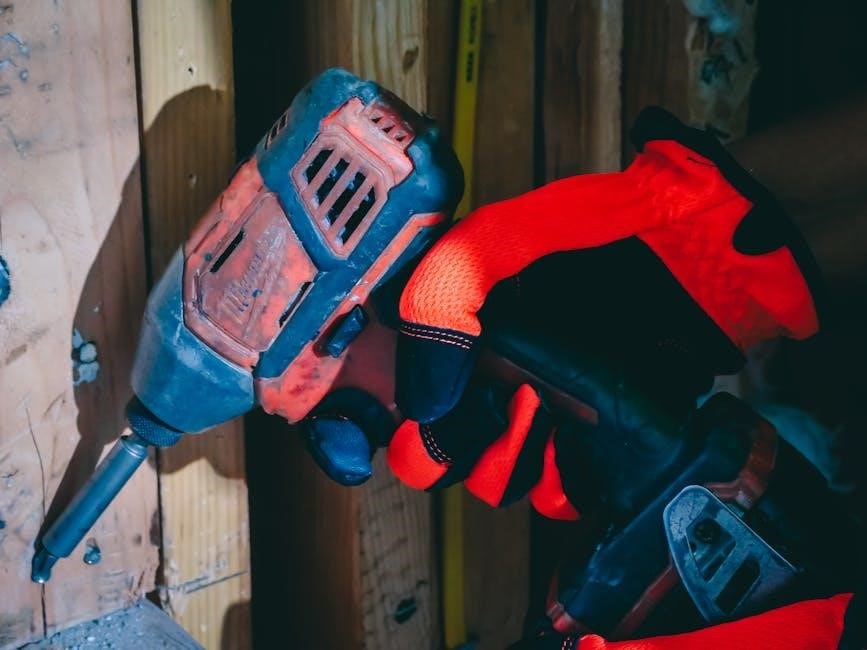
Maintenance and Storage
Regularly clean drill bits to prevent rust and maintain sharpness. Store them in a dry, organized container or case to avoid damage and ensure easy access when needed.
10.1 Cleaning Drill Bits
Clean drill bits regularly using a solvent or wire brush to remove debris and prevent rust. Store them dry to maintain sharpness and efficiency, ensuring optimal performance for future tasks.
10.2 Proper Storage to Extend Lifespan
Store drill bits in a cool, dry place, away from direct sunlight. Use a protective case or organizer to prevent rust and damage. Proper storage ensures drill bits remain sharp and ready for use, extending their lifespan and maintaining performance.
Troubleshooting Common Issues
Identify and address common drilling problems like bit slipping, overheating, or breakage. Regular maintenance, proper technique, and selecting the right bit for the material can prevent issues.
11.1 Drill Bit Slipping
Drill bit slipping occurs when the bit loses grip, causing inaccurate holes or damage. Ensure proper alignment, use a firm grip, and apply steady pressure. Pilot holes can help prevent slipping; Using the correct drill bit for the material and maintaining sharpness also reduces this common issue effectively. Regular maintenance is key.
11.2 Overheating During Drilling
Overheating during drilling can damage drill bits and workpieces. It often occurs due to excessive speed or improper bit usage. To prevent this, reduce drill speed, use the correct bit for the material, and apply cooling lubricants if necessary. Proper alignment and consistent pressure also help minimize heat buildup and ensure efficient drilling.
11.3 Drill Bit Breakage
Drill bit breakage often occurs due to excessive force, incorrect bit selection, or improper alignment. To prevent this, use the right bit for the material, maintain steady pressure, and avoid overheating. Regular maintenance, such as keeping bits sharp, also reduces the risk of breakage and ensures optimal performance during drilling operations.
